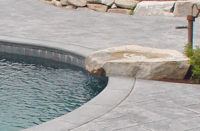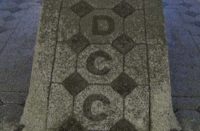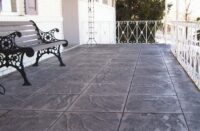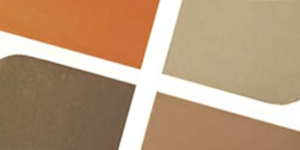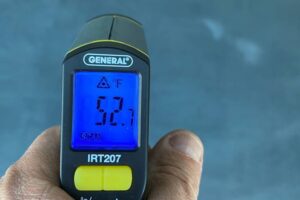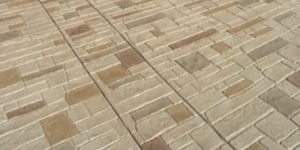
Summer has been slow to arrive this year. Most of the country is still shaking off the effects of a long cold winter followed by a wet spring. Eventually the temperature will rise, and the long hot days of summer will be upon us. With that in mind now would be a good time to review warm weather practices.
According to ACI 305R-10 Guide to Hot Weather Concreting, “Environmental factors, such as high ambient temperature, low humidity, high wind, or both low humidity and high wind, affect concrete properties and the construction operations of mixing, transporting and placing of the concrete materials.”
Anyone placing decorative concrete should be aware and comfortable with these practices. In addition to the ACI guidelines, here are some other considerations when placing decorative concrete or working with decorative concrete products in hot weather.
Color – Dark colors absorb heat; light colors reflect heat. Working on a dark surface or with dark colors in hot conditions can change how material flows or how fast materials dry. This is especially true when sealing or staining dark surfaces in direct sunlight.
In direct summer sun a dark colored concrete surface can reach in excess of 130-140 degrees F while the air temperature is in the 90s. Aside from application, consider the long-term implications and overall comfort for future use when considering color in hot climates.
Surface Evaporative Control – This is a method of spray-applying a water-based liquid chemical to the surface of plastic concrete to slow hydration from sun and wind. It’s important to note that some of these products can be used as a finishing aid when floating or troweling concrete in warm weather conditions. Before using any surface evaporative control agent as a finishing aid, always check the application guidelines.
Shadow Management – This is a term I heard on a golf course many years ago in regard to controlling where your shadow falls when standing on the green. The same applies when installing heat-sensitive products in warm weather. If half the project is in full sun and the other half is in shade from a tree or building, this will dramatically impact surface temperature and dry times.

As an installer, work with the environment, not against it. Start work when shadows are at a minimum. Break the job up into sections or use admixtures to slow the set based on where in the project the material is being placed. There are companies that offer small admixture add-packs for use on-site and for small loads. Small jobs can sometimes be tarped to provide full shade.
Dry times – When using stains, tints or sealers, understanding the product composition can make life easier. Heat is the universal catalyst. As temperature increases, so does the rate of reaction. In the decorative concrete world this equates to an increase in evaporation rate and a decrease in pot life, open time, dry time and set time.
In moderate weather conditions both water- and solvent-based sealers can be used without issue. As the temperature increases solvent-based sealers become more difficult to work with because solvents rapidly evaporate. Common issues resulting in warm weather application of solvent-based sealers include blisters or bubbles, inconsistent or blotchy coverage, and reduced coverage rates.
When working with stains and dyes in warm conditions, evaporation rate can impact the final color. I’ve seen many stain projects where the color was weak or nonexistent because the liquid carrier evaporated before carrying the color into the concrete surface.
An easy fix for most of those applications involves pre-wetting the surface prior to application. Not only does this reduce the temperature but it can help draw the stain or dye down into the concrete faster. Always make sure the color product you’re using is compatible with water before attempting this technique.
Storage – Where and how products are stored is often overlooked. Consider that for many reactions that take place at room temperature, the rate of reaction roughly doubles for every 18 degrees F the temperature rises.
Now consider how that affects sealer sitting in the back of a truck all day in the summer sun. Heat can also impact the performance of certain polymers and resins over time.
A few years back, I was very frustrated during a product training session in the Caribbean. An overlay product I’d used hundreds of times prior was sticky and hard to work with. I was at a loss as to why until I realized the material had been stored outside for days, in tropical heat, prior to my arrival.
The product temperature was in the 90-degree range, which basically made it unusable. Storing the powder in a temperature-controlled warehouse and soaking the liquids in drums of ice water solved that problem. It’s also important to note that storing flammable solvent-based materials in hot conditions can lead to pails rupturing and possibly exploding.
Application – Be prepared to adjust how you apply products depending on the temperature. An efficient method for applying stains and sealers is with an airless or HVLP sprayer. These sprayers atomize the product resulting in a consistent and uniform application rate.
Raise the temperature and throw in a stiff breeze and that fine mist will blow away in the wind. It’s common practice to increase the application rate and tip opening as the temperature rises. In some cases installers will move to low-volume pump-up sprayers of rolling sealers in warm weather. Of course you want to avoid the heat of the day, but that’s not always possible.
Product Mix – Not all products are designed for use in all environments. Acetone is a moisture scavenger, which means it grabs water and holds onto it. Using a high acetone-content sealer in high humidity environments (summertime in most of the country and coastal areas all the time) can lead to blushing and haze.
For those who see an increase in blushing and haze in the summer, this may be the cause. Becoming comfortable with multiple products and having warm weather options are never bad ideas.
So where do you find out information about the products you use and what they are made of? Start with the technical data sheets and safety data sheets. As a side note, by law you must provide your employees access to these documents and be able to produce them to anyone who asks on a job site. Digital versions online do qualify. These documents address best use for the product, limitations, proper handling and storage, and many times temperature range for use.
I’ve noted a few key areas where warm weather impacts decorative concrete applications. There are others, so I encourage everyone to do their research and use the wealth of information available. Noteworthy sources include the American Concrete Institute, American Society of Concrete Contractors, National Ready Mix Concrete Association, Concrete Decor magazine and concretedecor.net, to name just a few.
